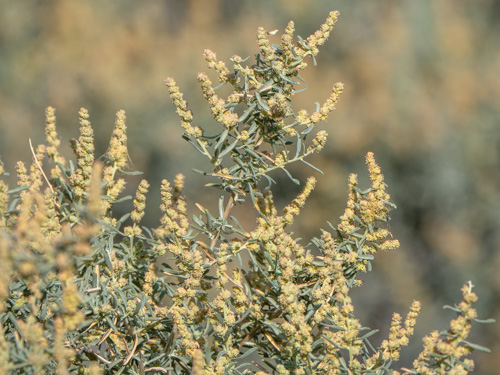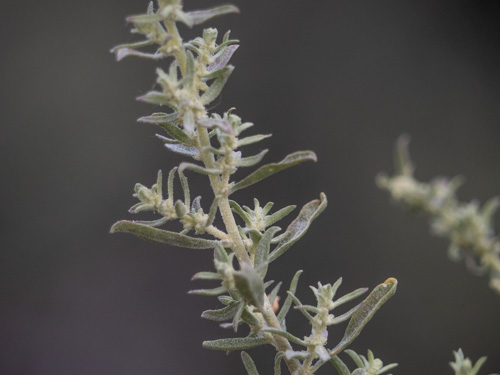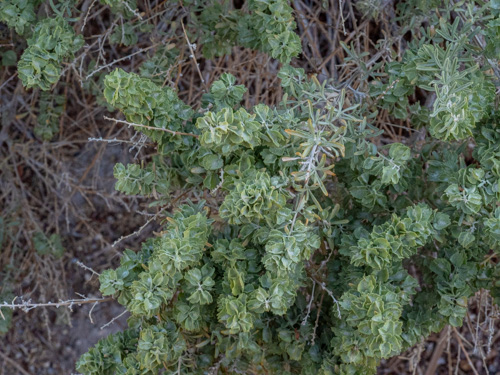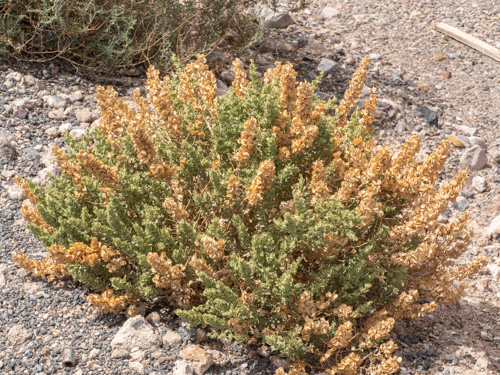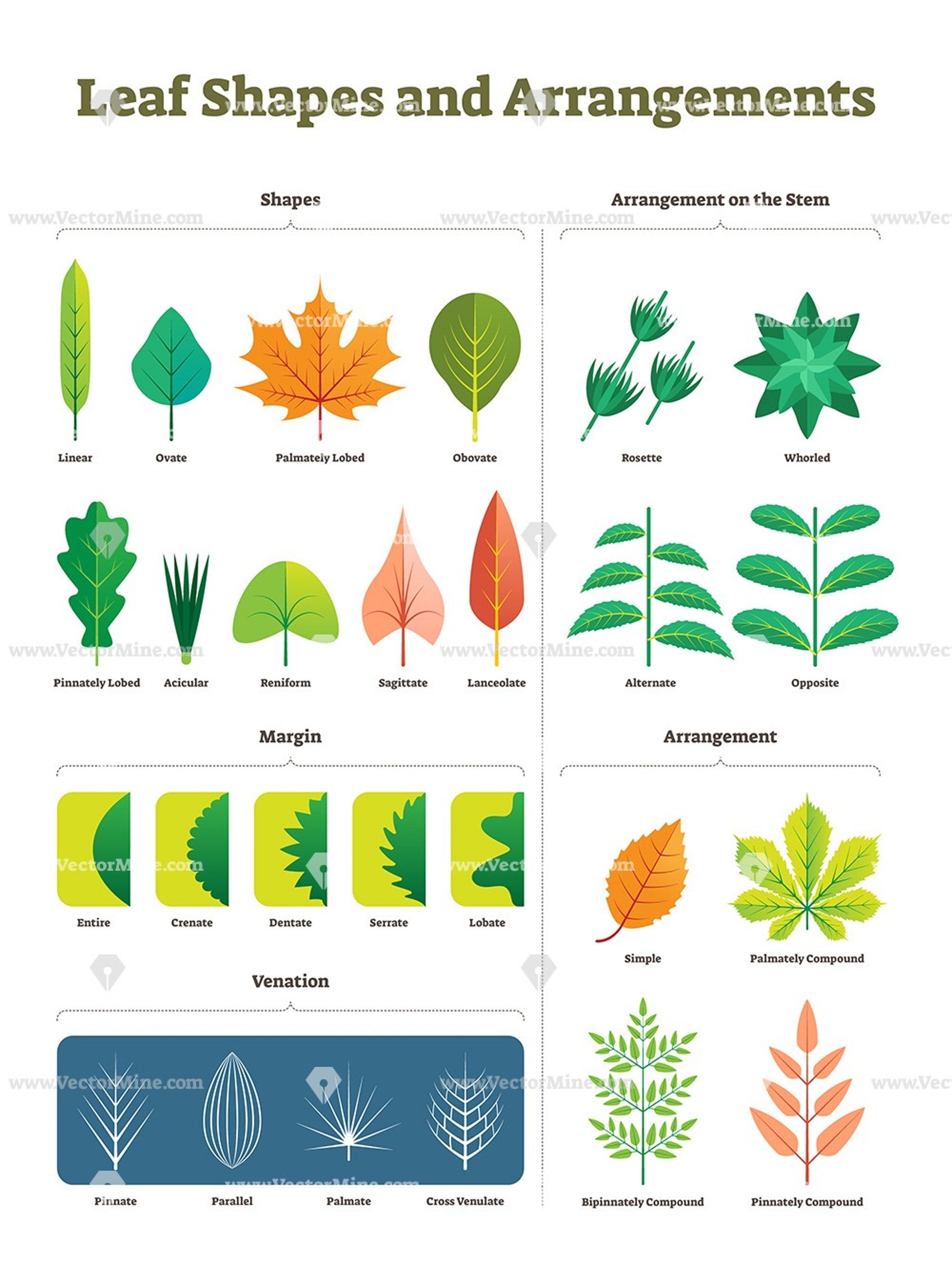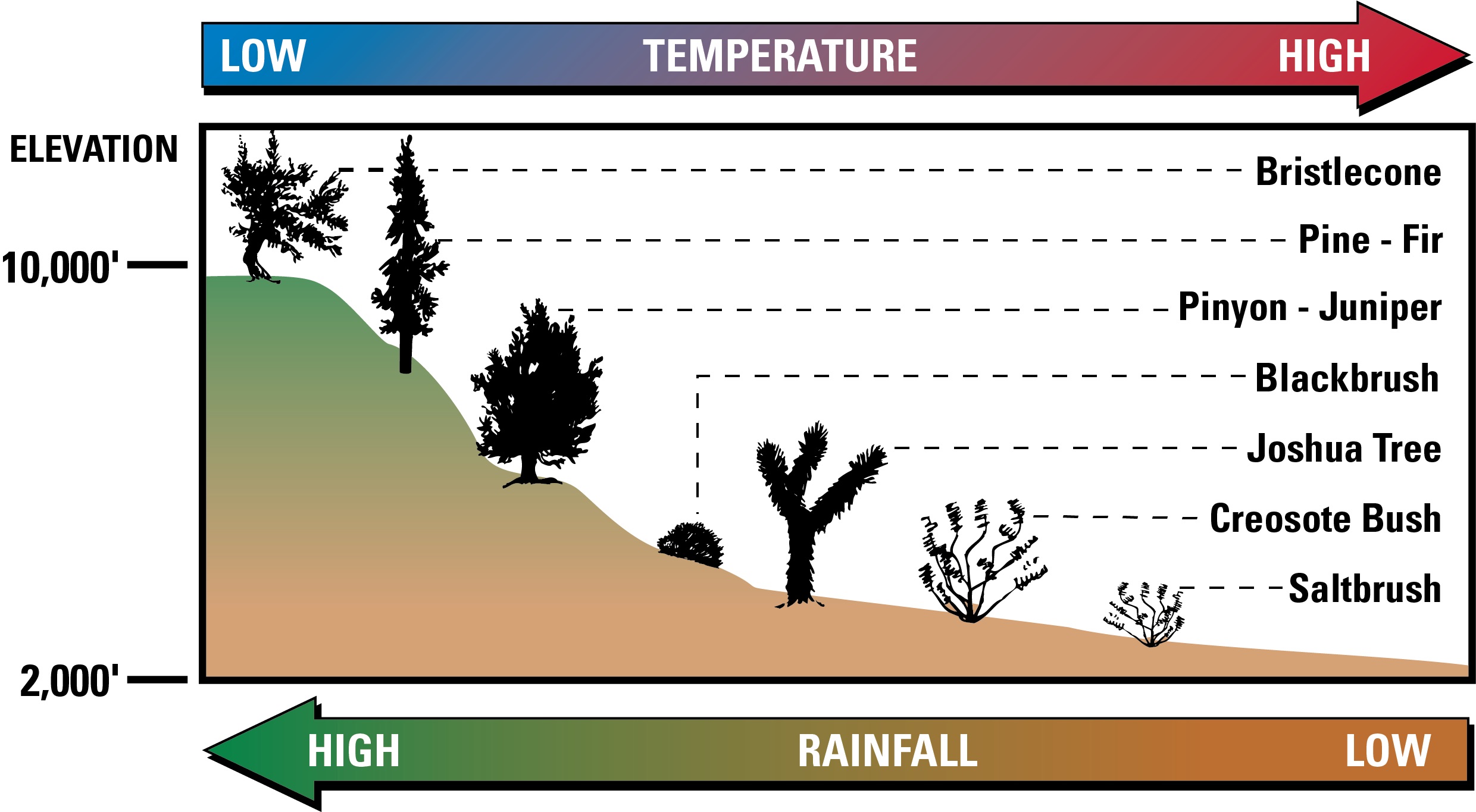Atriplex canescens
Four-wing Saltbush
Fourwing saltbush is a polymorphic species varying from deciduous to evergreen, depending on climate. Its much-branched stems are stout with whitish bark. It is most readily identified by the fruits, which have four wings at roughly 90 degree angles and are densely packed on long stems. Mature plants range from 1 to 8 ft in height, depending on ecotype and the soil and climate. As a general pattern, fourwing saltbush is erect and round in form, with rigid, brittle stems. It is heavily branched, with tight, thin bark. Lateral branches may bear spines at the tips. However, fourwing saltbush is extremely variable in physiology, form, and other characteristics. Ecotypes differ in growth rate, winter-deciduousness, drought and cold hardiness. Plants range from low (1 foot (0.3 m)) and semiwoody in South Dakota to tall (>10 feet (3 m)) and woody in parts of the Colorado Desert of Utah and Colorado. Leaves range from 0.8 to 2 inches (2-5 cm) long. Young leaves are covered with scales that protect against water loss. Mature leaves have epidermal trichomes (hairlike epidermal outgrowths) that concentrate and exude salts. Plants are evergreen (in warm climate) to winter-deciduous (in cold climates). Staminate flowers are borne in dense, 2- to 3-mm-wide spikes, and pistillate flowers form 2- to 16-inch-long (5-40-cm) panicles. The fruits are 0.3- to 0.4-inch-long (0.8-1 cm) utricles, with 0.4- to 1-inch-square (9-25 mm2) bracts. Fourwing saltbush is the only species in the genus with 4 large wings on the fruits [108]. Seeds are tightly contained within the utricles, and do not separate from the utricles at dispersal. Seeds measure approximately 1 × 2 mm, with 17 to 120 seeds/fruit.
